Astronomy Program News & Events
see also: McDonald Observatory press room / archive
2012
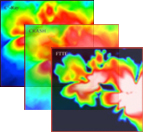
Cosmological Radiative Transfer Comparison Project Workshop IV Convenes Dec. 12-14
7 December 2012
The fourth meeting of the Cosmological Radiative Transfer Comparison Project (CRTCP) will be held at The University of Texas at Austin, Dec. 12-14 [map]. The CRTCP was created to advance the new frontier of Computational Cosmology in which the radiation released by the first stars and galaxies is incorporated in simulations of cosmic evolution, using the world's most powerful supercomputers. The Workshop, organized by Paul Shapiro, the Frank N. Edmonds, Jr. Regents Professor in Astronomy, will gather international experts to describe their methods and test them against each other on a common set of problems, including reionization of the universe and galaxy formation.
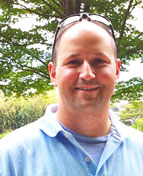
Asst. Prof. Steven Finkelstein
Astronomy Welcomes Assistant Professor Steven Finkelstein to Faculty
11 September 2012
The Department of Astronomy welcomes its newest faculty member Assistant Professor Steven Finkelstein. Dr. Finkelstein received a bachelor's of science in physics and astronomy from the University of Washington in 2003 and a Ph.D. in physics from Arizona State University in 2008. From 2008-2011, he was a postdoctoral researcher at Texas A&M University before bringing the prize Hubble Fellowship to The University of Texas at Austin last year. His research focuses on the discovery and characterization of the most distant galaxies in the universe, with an emphasis on studying their evolution from that distant epoch to today. This primarily involves observations with the Hubble Space Telescope, although it does include ground-based observations. He has been married for four years to wife Keely, who is a research associate and lecturer in the department, and they have a two-year old son, Kieran.
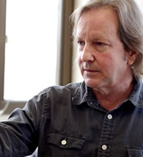
Don Winget
by Daniel Oppenheimer
College of Natural Sciences
5 August 2012
To re-create the surface of a white dwarf star, UT astronomer Don Winget starts with roughly the electricity needed to power a few TV sets for the evening. He runs that through a ring of big old generators, all pointing inward toward the center of a machine more than 100 feet across and 20 feet high. The generators compress the electricity into tight pulses, so it flows into containers holding gas. The gas is ionized with lasers, further compressing the pulses into finer spaces and shorter increments of time. Rinse and repeat until all the electricity flows down into a delicate array of tungsten wires clustered together inside a Twinkie-sized chamber about 35 centimeters from the center of the machine.

CERN
by Steven Weinberg
16 July 2012
The July 4 announcement that the "Higgs boson" had been discovered at the CERN laboratory in Geneva made news around the world. Why all the fuss? New discoveries of elementary particles have been made from time to time without attracting all this attention. It is often said that this particle provides the crucial clue to how all the other elementary particles get their masses. True enough, but this takes some explanation.
Robert Lee Moore Hall Receives Overflow Crowd for View of Venus Transit
Austin astro-enthusiasts gathered atop Robert Lee Moore Hall
on campus to regard the rare Venusian phenomenon.
News Coverage
Austin American Statesman ~ Venus Watching, 06.05.12
YNN ~ Venus made visible transit past sun Tuesday
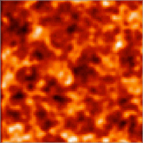
Cosmic Infrared Background
Texas Cosmology Center Symposium: Near Infrared Background and the Epoch of Reionization
11 May 2012
The Texas Cosmology Center will host the symposium "Near Infrared Background and the Epoch of Reionization," Monday and Tuesday, May 14-15, 2012, at the AT&T Conference Center on the campus of the University of Texas at Austin. The meeting brings together experts on various aspects of the near infrared background and its implications for the epoch of reionization and galaxy formation. The Cosmic Infrared Background is both difficult to measure, and very challenging theoretically. Foreground infrared sources that must be subtracted include zodiacal light (dust particles in the solar system emitting heat), and intracluster dust from our local group of galaxies. The hard theoretical question is, what is the source of the isolated background? The meeting is sponsored by the Texas Cosmology Center and The Max Planck Institut für Astrophysik.
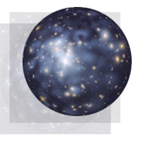
Texas Cosmology Center Symposium: Dark Matter Signatures in the Gamma-ray Sky
3 May 2012
The Texas Cosmology Center will host the symposium "Dark Matter Signatures in the Gamma-ray Sky," Monday and Tuesday, May 7-8, 2012, at the AT&T Conference Center on the campus of the University of Texas at Austin. The meeting brings together experts on various aspects of indirect detection of dark matter, which is inferred to exist by its gravitational influence on visible matter at large scales, but for which there is yet no means of direct detection. A central aim is to consider new data from the Fermi-LAT gamma-ray spacecraft. Is dark matter the source of any of the new data, and if not, could that be a constraint? Scheduled talks range from particle physics, to the inner region of the Milky Way, to galaxy clusters.
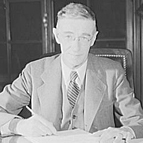
Vannevar Bush
From Marfa to Mauritania in Forty Years
by David Conrad ~ Not Even Past
30 April 2012
Four hundred and fifty miles west of the University of Texas at Austin, thirty-seven miles (as the car drives) north of the town of Marfa, Texas, and almost 6,800 feet above sea level sit the white and silver domes of the McDonald Observatory. Each dome shelters an enormous, yet delicate, tool: a combination of mirrors, metal, and electronics capable of gathering light from long ago and far, far away. Decades are a relatively tiny unit of temporal measurement on an astronomical scale, and the distances between terrestrial points are vanishingly small compared to the distances between celestial bodies. In historical terms, however, the transformation of the McDonald Observatory from a peripheral startup into an internationally recognized hub of scientific research was no small step.
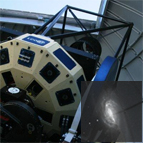
1 m LCOGT and NGC 2903
3 April 2012
Tests and calibrations are underway following April 1, first light celebrations at McDonald Observatory, for the first 1-meter telescope installation of the Las Cumbres Observatory Global Telescope (LCOGT). The robotic network will deploy sixteen 1-meter telescopes at observatories in Chile, South Africa, Australia, Texas, Hawaii, and the Canary Islands, providing uninterrupted coverage of night sky objects. The University of Texas at Austin is a pioneer in continuous night sky observing with the Whole Earth Telescope (WET), which coordinates among an international network of participating institutions. The LCOGT is a big step forward, simplifying and automating the coordination of observations. LCOGT is based in Goleta, CA.
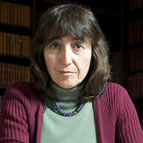
Dr. Wendy Freedman
28 March 2012
Dr. Wendy Freedman, The Crawford H. Greenwalt Chair and Director of the Carnegie Observatories, will present the public talk, "A Journey of Discovery: Our Expanding Universe," Wednesday, April 4 from 4:30-5:30 PM, in ETC 2.136 [map]. Dr. Freedman was recognized with the prestigious 2009 Gruber Cosmology Prize for her work on the measurement of the Hubble constant, whose value determines the current rate of expansion of the universe. As chair of the Giant Magellan Telescope Board of Directors, she now leads the effort build the world's largest telescope, breaking into the 25-meter class, at Carnegie's Las Campanas Observatory in Chile. Dr. Freedman will be the sixteenth recipient of the Antoinette de Vaucouleurs Memorial Lectureship, which recognizes a lifetime of achievement in Astronomy.
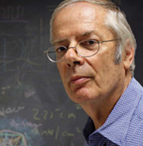
Dr. Roger P. Angel
Twentieth Annual Great Lecture in Astronomy - A New Job for Telescopes: Making Solar Electricity
1 February 2012
Dr. Roger P. Angel, Director of the Steward Observatory Mirror Lab, and Regents Professor of Astronomy and Optical Sciences at the University of Arizona, will deliver the public lecture "A New Job for Telescopes: Making Solar Electricity," Saturday, Feb. 11 at 1:00 PM in ACES Avaya Auditorium on the University of Texas at Austin campus. Dr. Angel has developed concepts and technology for some of the most powerful astronomical telescopes, including the Large Binocular Telescope and the planned Giant Magellan Telescope. Today he is working on a novel telescope that harvests solar energy by focusing sunlight onto small but powerful photovoltaic cells. The Twentieth Annual Great Lecture in Astronomy is sponsored by The University of Texas at Austin McDonald Observatory and Department of Astronomy Board of Visitors.
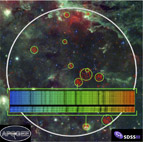
[Frinchaboy, Holtzman, et.al]
News release provided by SDSSIII collaboration
9 January 2012
Astronomy has a powerful new tool to probe the structure of our galaxy. The Apache Point Observatory Galactic Evolution Experiment (APOGEE) spectrograph is the newest instrument deployed by the Sloan Digital Sky Survey III (SDSS-III). McDonald Observatory astronomer Matthew Shetrone is the project's architect. The revolutionary capabilities of this high-resolution infrared spectrograph were presented at January's 219th meeting of the American Astronomical Society in Austin, TX. Over the next three years APOGEE's initial census of the chemical constitution and motions of more than 100,000 stars spread all over the Milky Way will bring together data on stars with ages spanning nearly the full age of the universe, including some of the earliest ever created.
Progress in Fight to Keep Night Skies Dark
New York Times
Texas Parks, Towns Embrace Dark Sky Movement
Texas Tribune
